Living walls, also known as plant walls, are becoming a sought-after feature in both commercial and residential design. These vertical gardens can transform any space by adding beauty, freshness, and a connection to nature. Whether you’re a property manager, business owner, architect, or interior designer, it pays to know the various types of living walls available. Explore the six most popular plant walls and learn how colorful living walls can help you create a stunning and unique design.
In this article, we’ll explore the different types of living walls, how they can benefit your space, and most importantly, how you can add vibrant color to your plant wall to make it truly stand out.
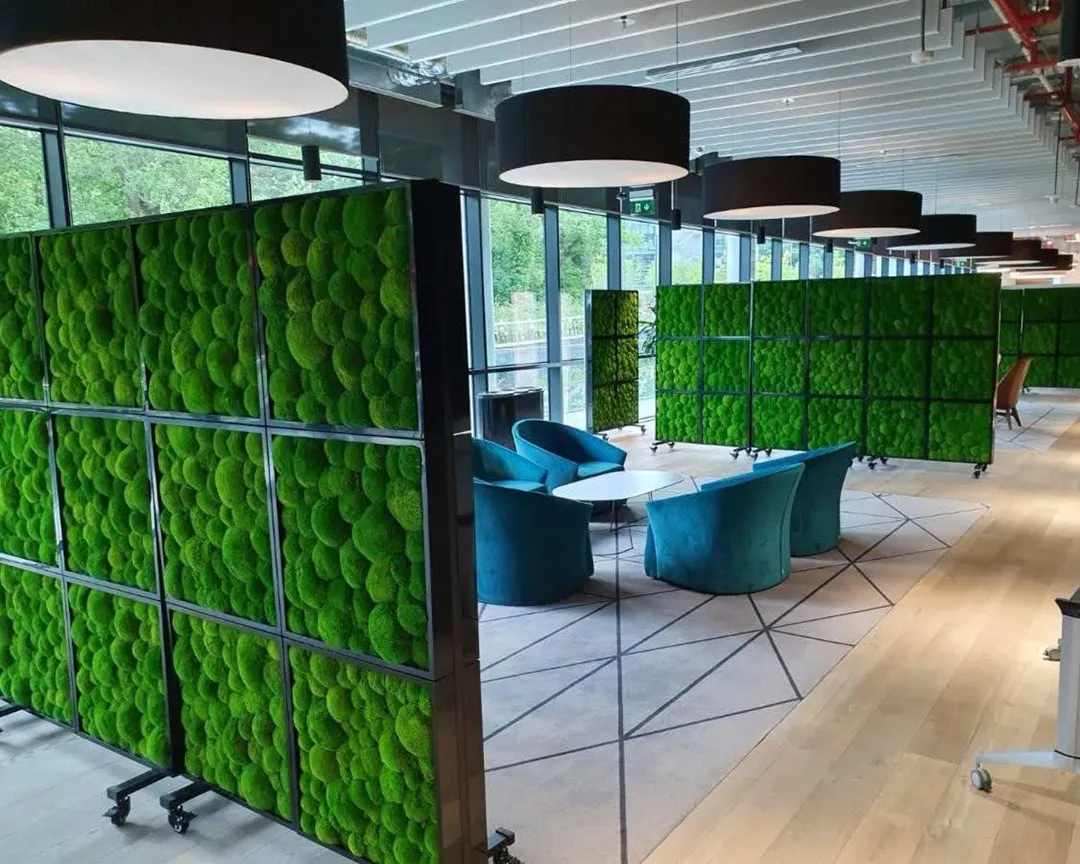
1. Moss living walls (MossWallArt™)
One of the most popular types of living walls is the moss wall, also known as MossWallArt™. These walls are made from preserved moss and offer a beautiful, low-maintenance solution for creating lush greenery without the need for watering or direct sunlight. The moss is preserved in a way that maintains its vibrant color and soft texture, allowing it to thrive in indoor spaces with minimal care.
MossWallArt™ is ideal for spaces with low light conditions where traditional plants may struggle. It’s often used in lobbies, offices, restaurants, and even mobile plant walls that double as photo backdrops, room dividers, or sound absorbers. One of the standout benefits of moss walls is that they don’t require maintenance like watering or pruning, making them an excellent option for busy environments.
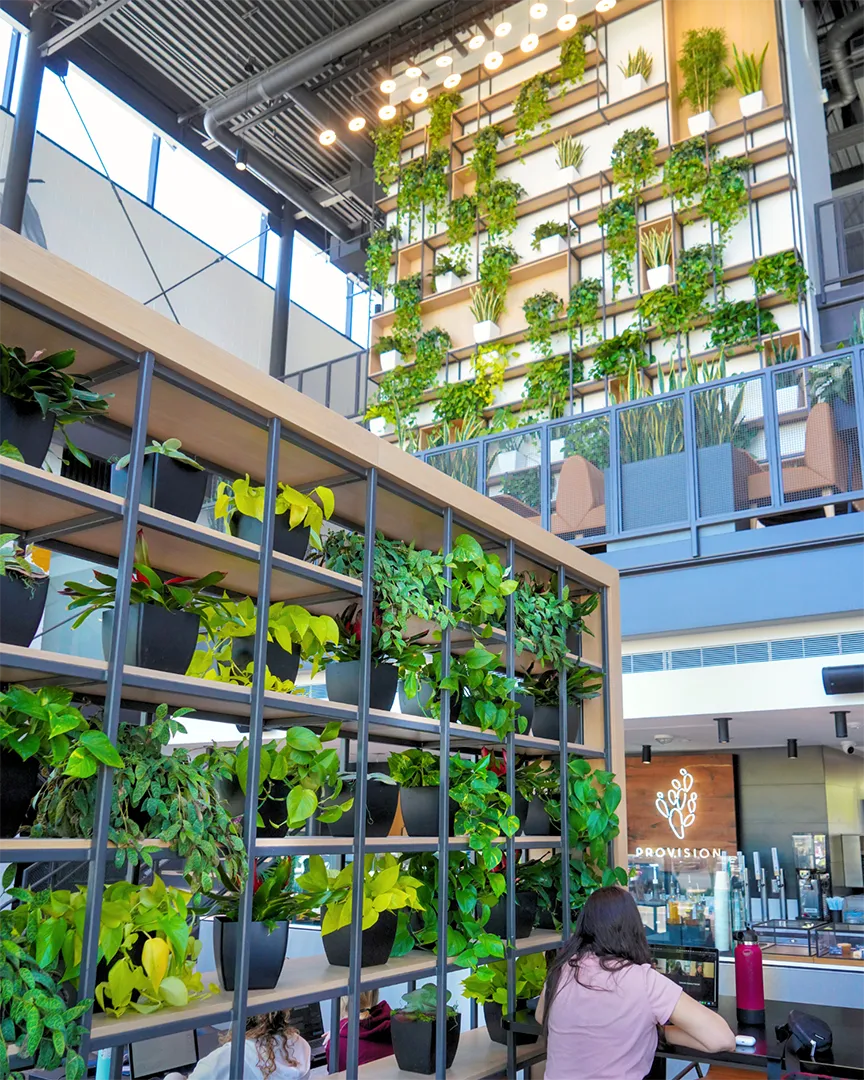
2. Potted plant walls as living walls
Another popular choice for living walls is the potted plant wall, where individual pots or containers are mounted on a vertical frame or shelving unit. This type of plant wall offers flexibility in design and allows for easy watering and plant rotation. Live plants can be changed seasonally, and containers make it simple to replace individual plants when needed.
Potted plant walls are often used to showcase a variety of plants, including draping pothos, succulents, shrubs, or tropical plant species. This type of living wall is highly customizable and, depending on the space, can accommodate plants of different shapes, sizes, and colors.
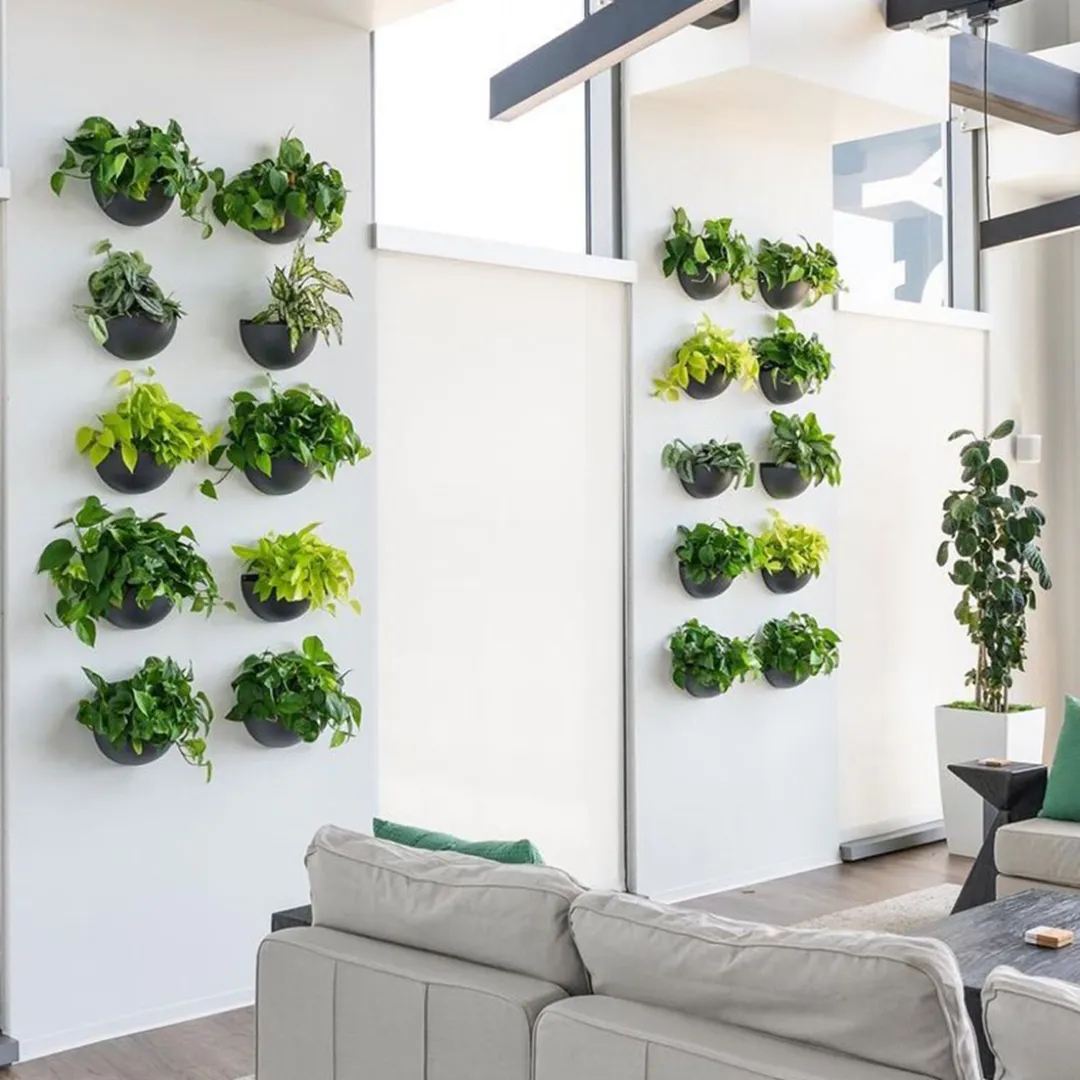
3. Living walls made of wall-mounted containers
A living wall can also be created by attaching numerous individual plant containers directly to a wall. These containers can be made from materials like plastic, ceramic, or metal, and they are typically arranged in a grid-like pattern. They are an excellent option for clients who wish to use plants to accessorize a more prominent focal point, such as a trophy case, art piece, or reception desk.
These living walls are perfect for creating a clean, organized design that allows each plant to shine on its own. Because the plants are individually potted, this style is low-maintenance and offers the flexibility to replace individual plants as needed.
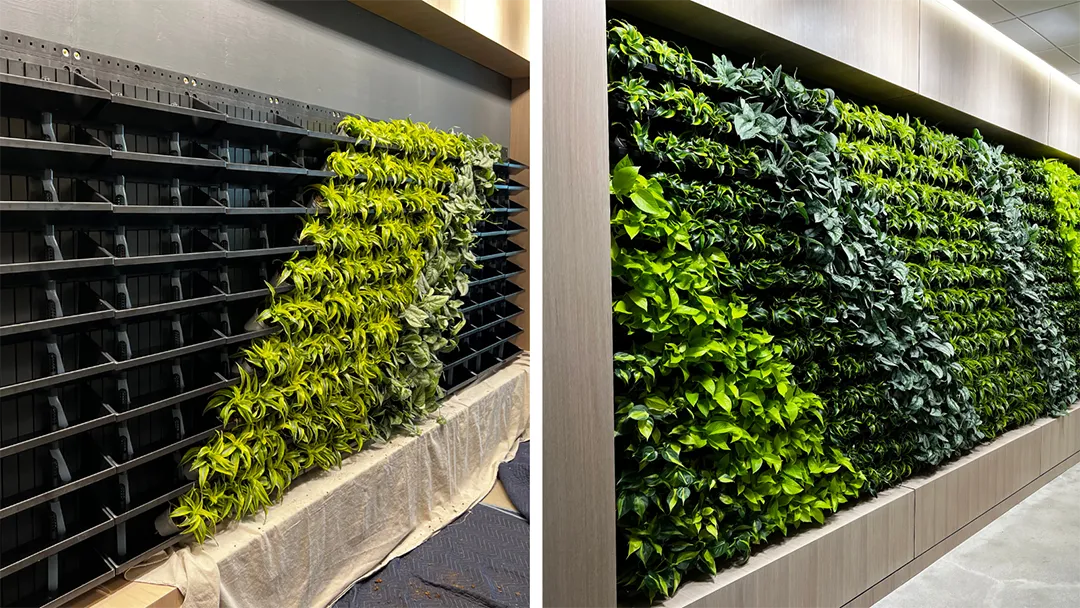
4. Tray-based Living Walls
Tray-based living walls are designed with horizontal trays that stack atop each other and click together. These trays contain soil, providing plants with the necessary nutrients to grow. Tray-based systems are often used in the construction of new spaces, where plumbing plans incorporate an automated drip irrigation system to water the plants. Advanced, automated soil detection systems indicate when the soil is ready for moisture and when it should be left to dry out.
One of the primary benefits of natural tray-based living walls is the natural beauty they bring to any space. These plant walls require more maintenance than preserved moss walls but provide the benefits of real, soil-grown plants like air purification and the natural fragrances of greenery.
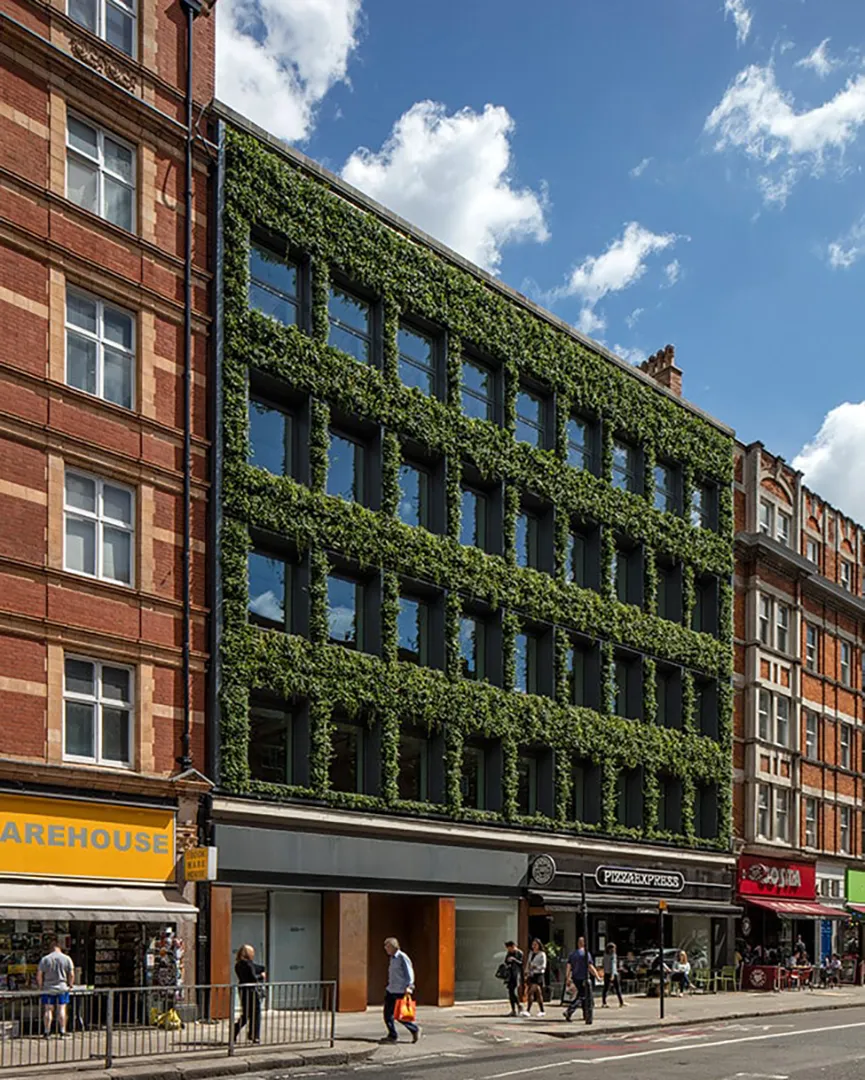
5. Climbing plant walls and plant walls for patioscapes
Climbing plant walls, also known as green facades, use plants that grow vertically, climbing up a wall’s surface with the help of a trellis or grid system. This type of living wall is often seen on building exteriors, patioscapes, and in urban green spaces. Plants like ivy, climbing roses, and bougainvillea are commonly used for green facades. Climbing plant walls can be carefully trimmed for a clean, modern look, or left untamed to create a more organic, wild aesthetic.
Soil-based living walls, also known as bio-walls, use a continuous sheet of soil as the growing medium for plants. The plants are embedded directly into the soil of the wall’s surface, with the root systems growing together over time. This type of plant wall creates a living, flowing green landscape and provides all the natural benefits of soil-grown plants.
While stunning, soil-based living walls are typically more high-maintenance due to the need for built-in irrigation and pruning methods for hard-to-reach areas. The plants’ shared root systems make it very difficult to replace plants one at a time. However, they are a fantastic option for those who want a truly natural, vibrant design that makes a striking first impression. These living walls are perfect for extra-large interior spaces like hotel lobbies and corporate entryways.
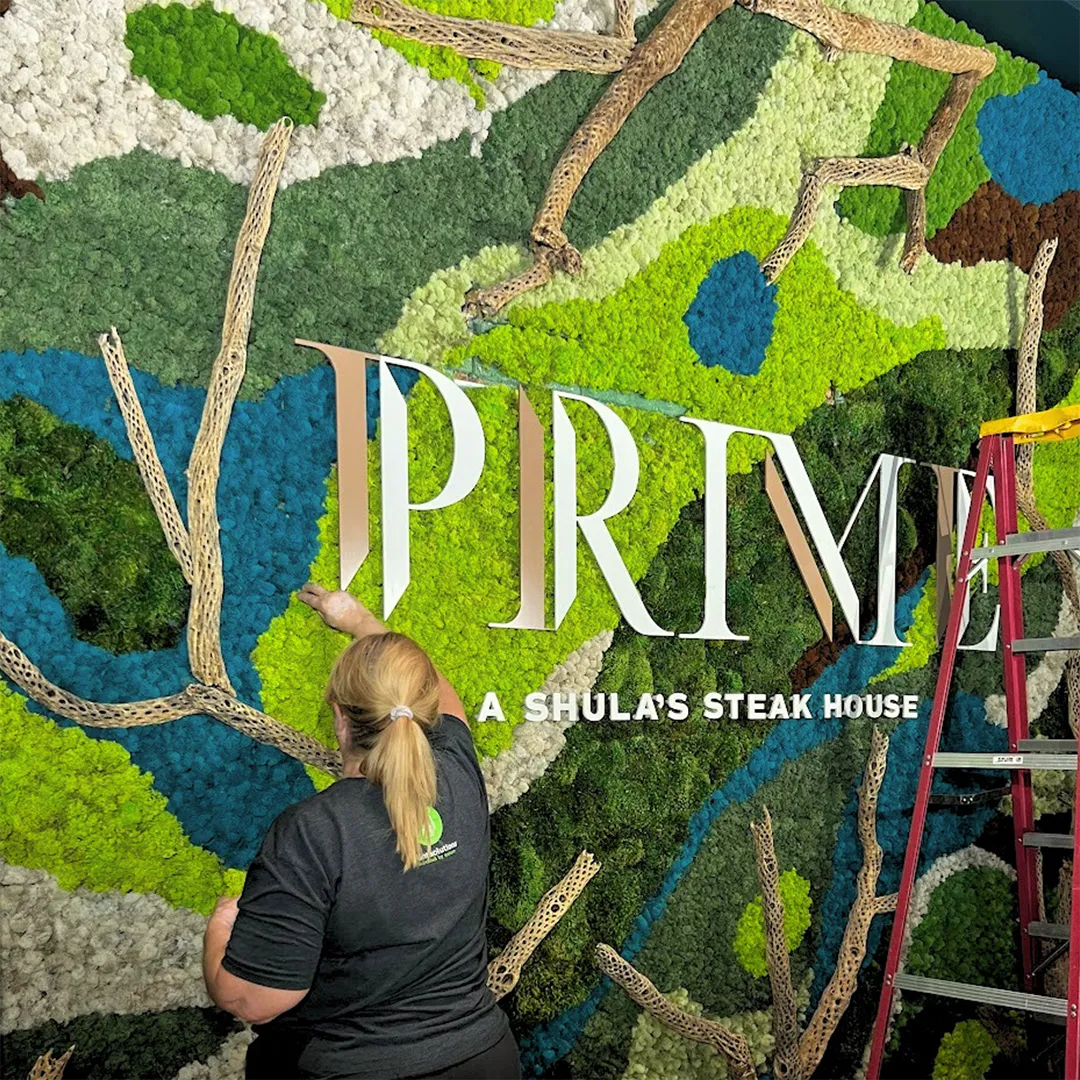
How to add color to your living wall
Adding color to your living wall can take your design from beautiful to breathtaking. Whether you’re working with real plants or artificial plants, there are several ways to infuse vibrant hues into your plant wall:
Add colored succulents (real or artificial)
Succulents are available in a variety of colors, from the deep purples of Echeveria to the rich reds of Sedum. Adding colored succulents to your plant wall will provide texture and vibrant color, perfect for spaces that need a boost of enthusiasm. Real and artificial succulents are great options depending on the level of maintenance you desire.
Add tinted preserved moss
Tinted moss is available in a wide range of colors, from vibrant reds to cool blues, and it is often used in MossWallArt™ for brand recognition. If you’re designing a wall for a specific business or need to match a color palette, dyed moss can help incorporate your brand’s colors or simply make your wall pop with bold hues.
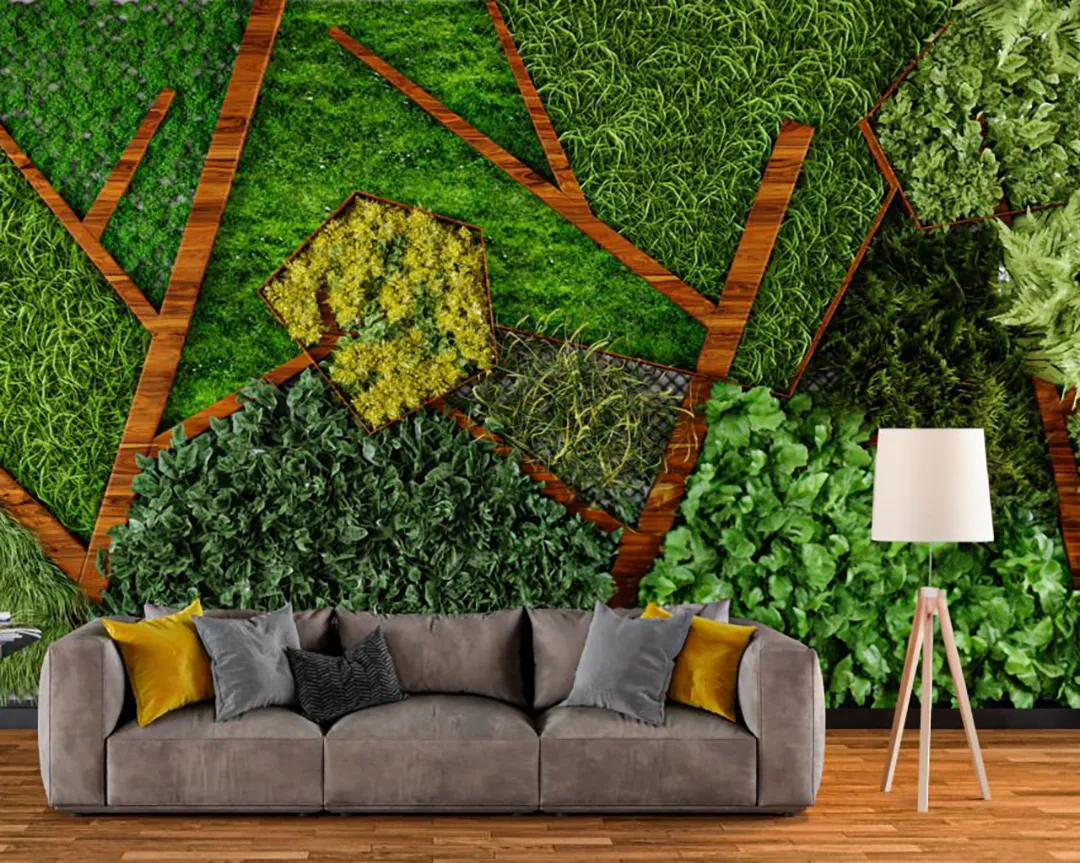
Add flowering plants (real or artificial)
Flowering plants are an obvious choice for adding vibrant color to any living wall. Choose real flowering plants like bromeliads for a fresh, seasonal look, or opt for artificial flowers if you’re looking for low-maintenance solutions that stay vibrant year-round.
Add other natural elements
To add even more dimension and color to your plant wall, consider incorporating other natural elements like branches, shells, stones, or stained wood. These biophilic elements complement plantscapes, providing texture and visual interest.
Build your plant wall around existing wall features with color
Consider designing your plant wall around existing features like sealed wood paneling, metal frames, or ceramic sculptures. These features can bring an additional layer of color, texture, and structure to your biophilic design.
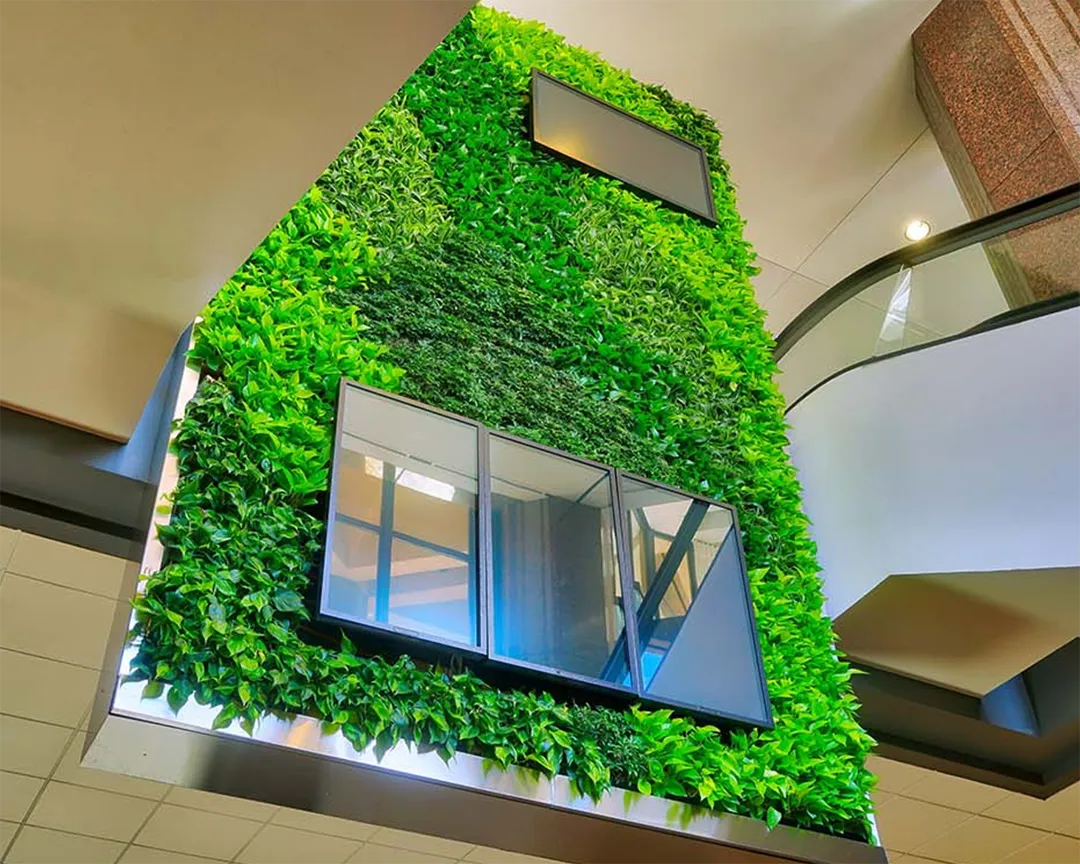
Create a living wall that reflects your style
Plant walls are more than just a design trend—they’re a transformative way to bring nature indoors. From MossWallArt™ to tray-based living walls, the variety of available plant walls allows for endless customization and creativity. If you’re looking to enhance your home, office, or commercial space, consider adding a living wall. Plant walls provide numerous benefits, from air purification to boosting creativity and mood. Build your living wall as a true work of art that reflects your style and enhances your environment.
Discover how plant walls can elevate your home or business with beauty, freshness, and a touch of nature. Contact us today to explore your options and bring your vision to life!Get In Touch
